+ Jean-Yves Bonnet:
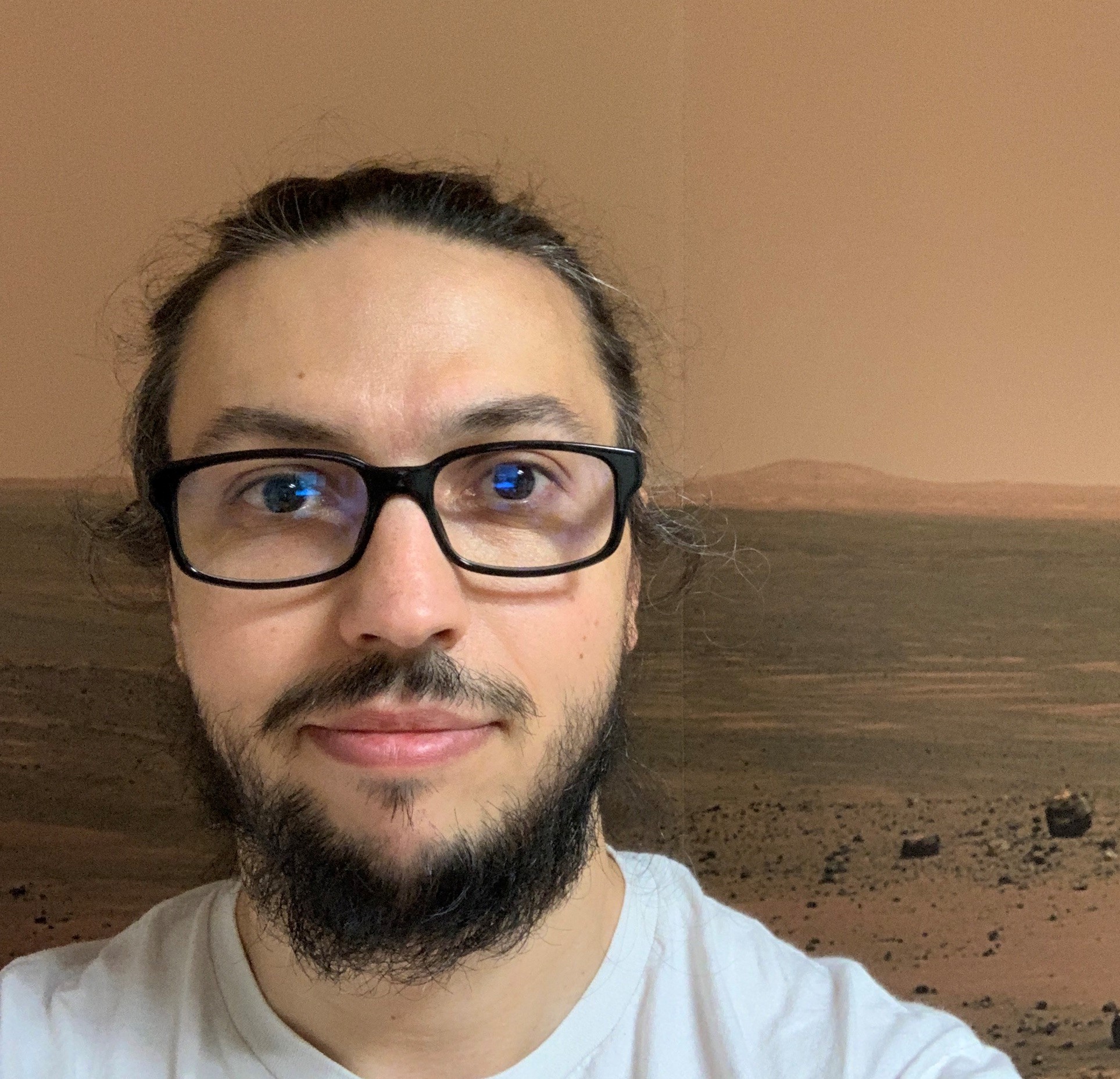 Location?
Location?
Telespazio France/ CNES, Toulouse France
What is your role in the SAM project?
I am an operation engineer at Telespazio France. My roles cover payload uplink and downlink. I am also involved in data processing and analysis, mainly focused on following the instrument status and health.
What about SAM do you find most interesting? Most challenging?
The most challenging part is that we have to be prepared to analyze a wide variety of samples with little clues on what their composition is. We thus need to design experiments to analyze them and retrieve the most science we can from these analyses, all of that with big constraints on the resources we can use. But with great challenges come great discoveries and the most interesting thing about this instrument is that it helped us to demonstrate that Mars was once habitable and that life appearing conditions existed at Mars when life actually appeared on Earth. This is mind blowing to think that those two planets were very similar more than 4 billion years ago.
Have you worked on other missions or flight instruments? If so which ones?
I am currently involved in the operations of another instrument onboard the Curiosity rover: ChemCam (CCAM). I am also involved in the operations of an instrument onboard the Perseverance rover: SuperCam (SCAM). My roles within the CCAM and SCAM team are very similar to my roles within the SAM team. I cover Uplink and downlink roles and also data processing and analysis.
What kind/level of education do you have?
I am a geologist and I have a PhD in earth and planetary sciences. I obtained my PhD from the University of Grenoble in France. My research topics were thermal evolution of organic material in comets and meteorites. I also had strong skills in computer science and instrumentation so I started to hold positions as an engineer and still do so.
What are your favorite things to do outside of work?
Astronomy, photography, hiking and a lot of other cool things!
+ Therese Errigo:
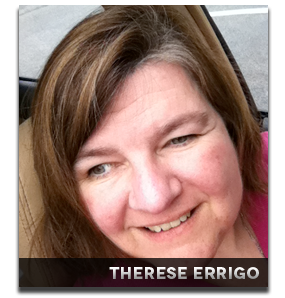 What about SAM do you find most interesting? Most challenging?
What about SAM do you find most interesting? Most challenging?
Achieving the permissable levels of contaminants in the gas and air samples within the mission technical, cost, and schedule constraints, required the cooperation of all GSFC and MSL team members in order to develop iinnovative approaches to contamination control for both the SAM hardware and the MSL cruise, descent stage and rover hardware. Every aspect of the mission-- from hardware design and materials to mars operations -- had to be evaluated to determine its potential to contaminate the sample or the sample path. The work is still continuing as we evaluate operations scenarios and adjust then based on the results of ground testing on our test beds. For a contamination engineer it does not get much more interesting or exciting than this mission. We had to maintain ultra-low levels of contamination on sample path hardware but allow other hardware to be have much higher levels to be within our cost and schedule constraints. Probably the most challenging aspects were having to accept riskier solutions (we engineers always want the best!) in order to keep in budget and the work we did on modelling contamination transport in Mar's unique environment (CO2 atosphere, high UV radiation levels, wide temperature swings, dust storms, etc.)
Have you worked on other missions or flight instruments? If so which ones?
As a senior engineer, I've supported a wide array of national and international missions in my long career as a radiation analyst, materials engineer, contamination control engineer, and, with SAM, planetary protection. As a young engineer, I was the lead contamination control engineer for ESA's SOHO mission; I lived in Toulouse, France and was able to work with many of the European Space Agencies and firms. When I returned to the states, I went on to be the lead engineer on missions to study the sun and it's interactions with Earth and its mangetosphere -- STEREO, IMAGE, Hinode (instrument), and most recently MMS and Solar Probe. I'm also working with many of the other SAM team members on the LADEE mission's mass spectrometer to study the lunar atmosphere and it's sister instrument that will fly on the Mars bound Maven Orbital Observatory as well as MOMA, an instrument that will fly on the European Rover. Other assignments over the course of my career have included: radiation analyst for TOPEX, Exploerer Platform and SMEX electronics; lead engineer for FUSE, a highly contamination sensitive far-ultraviolet spectroscipe and observatory built to answer questions about cosmic origins and the Big Bang theory through studying deuterium; instrument engineer for the Total Ozone Mapping Spectrometer for the QuikTOMS (launch vehicle failed) and Japanese ADEOS missions, and support, consulting, or reviewer for such missions as ChipSAT, AIM, HST, FAST, SMEX, SWIFT, GEMS, etc)
What kind/level of education do you have?
Bachelor Degrees in Science and English
What are your favorite things to do outside of work?
Photography, cooking, traveling, sharing good times with family and friends, being active in my church
+ Stephen Indyk:
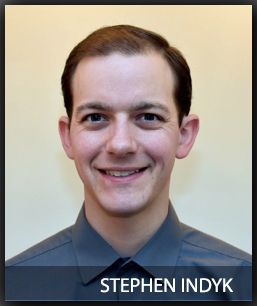 Location?
Location?
NASA GSFC
What is your role in the SAM project?
I am an engineer with Honeybee Robotics. My roles include flight operations uplink /downlink, engineering data analysis and SAM test bed.
What about SAM do you find most interesting? Most challenging?
It's fascinating being one of the first people to see the science information we collect from Mars and how the science team interprets these findings. The most challenging part of operating on Mars is knowing when to use the limited resources correctly. It’s never known what valuable scientific discovery could be just around the corner. So should we spend resources on what’s in front of us now, or wait and see what the rover might come across next?
Have you worked on other missions or flight instruments? If so which ones?
Yes, I currently work on the Rock Abrasion Tool (RAT) on the active Mars Exploration Rover (MER), Opportunity.
What kind/level of education do you have?
Masters and bachelors in mechanical engineering from Rutgers University in New Brunswick, New Jersey
What are your favorite things to do outside of work?
Cycling, triathlons and photography.
+ Matthew Lefavor:
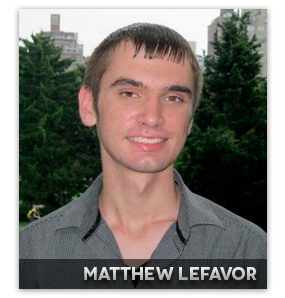 Location?
Location?
NASA GSFC
What is your role in the SAM project?
I am writing and maintaining a suite of software tools (mostly in Python) for extracting, managing, and analyzing SAM engineering and science data. I am also responsible for the software that makes SAM data publicly available through Planetary Data Systems. When SAM Launches, I will be out at JPL assisting in the day-to-day operation of SAM.
What about SAM do you find most interesting? Most challenging?
Writing data analysis software requires synthesizing the hard work and insights of the scientists and engineers who know what data needs to be analyzed and how one would go about analyzing it, even though I have relatively little knowledge of the other team members' areas of expertise. It is as if I am a toolmaker creating tools that I am still learning how to use myself. It is a challenge, but one cannot help but learn a lot in the process—which keeps things interesting. On top of all this, the SAM team first introduced me to the Python programming language, and working with it has been the most fun I've ever had with a computer.
Have you worked on other missions or flight instruments? If so which ones?
Like much of the GSFC SAM team, I am assisting with the mass spectrometer missions on the LADEE and MAVEN satellites.
What kind/level of education do you have?
I hold a B.S. in Computer Science and Philosophy from Belmont University, and I am currently working on an M.A. in the Liberal Arts at St. John's College.
What are your favorite things to do outside of work?
I love reading philosophy and literature, and I'm learning how to read classical Greek. When I have time, I also like to DJ and compose electronic music.
+ Kathryn Luczek:
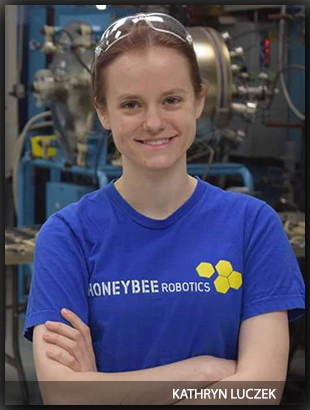 Location?
Location?
Honeybee Robotics, Pasadena, CA
What is your role in the SAM project?
My role on SAM is as a Payload Uplink Lead through Honeybee Robotics.
What about SAM do you find most interesting? Most challenging?
The most challenging parts of my work with SAM are the days when we uplink multiple new activities and triple check that everything works as expected.
Have you worked on other missions or flight instruments? If so which ones?
I also work as a Rock Abrasion Tool (RAT) Payload Uplink Lead for Mars Exploration Rover B (Opportunity).
What kind/level of education do you have?
I have a Master of Engineering in Space Systems Engineering and a Bachelor of Engineering in Aerospace Engineering from The University of Michigan.
What are your favorite things to do outside of work?
Outside of work, I volunteer with kittens that have been born on the streets of LA and make my own modern quilts.
+ David Martin:
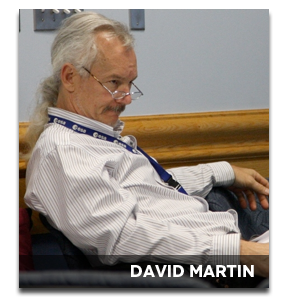 Location?
Location?
Right in the thick of things.
What is your role in the SAM project?
Lead Systems
What about SAM do you find most interesting? Most challenging?
Since we don't know what we're going to find on Mars, we've built a chemical analysis laboratory in a box. We have maintained the flexibility in hardware (valves, routing through units…) and software (operational unit choices, heater set-points, timing…) to adjust the in situ analysis of tomorrow's samples, according to what today's analysis tells us.
Have you worked on other missions or flight instruments? If so which ones?
This is my tenth mission developing either spacecraft or instruments. I cut my teeth on the Upper Atmospheric Research Satellite: 10 instruments, some of which operated nearly 20 years before the spacecraft recently burned in.
What kind/level of education do you have?
Masters in EE, but my home metal shop experience is almost as valuable as the education.
What are your favorite things to do outside of work?
Currently, playing tenor sax and working out, are two of three things that provide great endorphin rushes.
+ Tom Nolan:
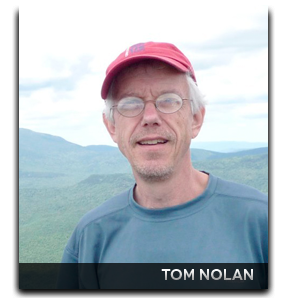 Location?
Location?
NASA/GSFC
What is your role in the SAM project?
Principal flight software developer for SAM system and motor controllers
What about SAM do you find most interesting? Most challenging?
SAM has a diverse collection of analysis and transport components, which can be combined and sequenced in a nearly unlimited number of ways. The challenge was to create a new software paradigm that allows the science team to take advantage of this unprecedented flexibility, adapt to conditions on Mars, and maximize the potential for discovery. The fun part for me is making the hardware perform.
Have you worked on other missions or flight instruments? If so which ones?
I've been developing instrument software, at NASA and elsewhere, for more than 30 years. I contributed software to a number of high-energy astrophysics missions, including instruments onboard the GRO, Wind, and STEREO satellites, and the LEGS, GRIS, Nightglow, and InFocus balloon campaigns. More recently, I've been working on planetary missions: LADEE, MAVEN, and the future ESA ExoMars rover.
What kind/level of education do you have?
I have a degree in mathematics. And a law degree that I rarely have to wield.
What are your favorite things to do outside of work?
Running and orienteering.
+ Kiran Patel:
 Location?
Location?
NASA Goddard Space Flight Center in Greenbelt, MD
What is your role in the SAM project?
I am a member of software team to support the development of Lab, Ground Support Equipment (GSE) and science data analysis software.
What about SAM do you find most interesting? Most challenging?
The complexity of SAM instrument and developing Lab and GSE software.
Have you worked on other missions or flight instruments? If so which ones?
XTE, SWIFT/BAT. I have developed flight and Ground Support Equipment software to handle telemetry and commanding for Gamma-Ray and hard X-Rays Scientific Balloon instruments.
What kind/level of education do you have?
B.S in Electrical Engineering
M.S in Computer Science (JHU)
What are your favorite things to do outside of work?
Traveling, walking, reading, watching classical movies and spending time with my family.
+ Gale Paulsen:
Location?
Honeybee Robotics, Pasadena, CA
What is your role in the SAM project?
SAM Payload Uplink Lead
What about SAM do you find most interesting? Most challenging?
The complete system design is incredibly complex and capable. It's impressive how much technology has been packaged into this relatively small box.
Have you worked on other missions or flight instruments? If so which ones?
Mars Exploration Rover Rock Abrasion Tool (RAT), Phoenix Icy Soil Acquisition Device (ISAD), and currently Sentinel 6 Supplemental Calibration System.
What kind/level of education do you have?
Masters in Mechanical Engineering
What are your favorite things to do outside of work?
Spend time with my kids, hike, camp, any sort of sport that doesn't involve swimming.
+ Benny Prats:
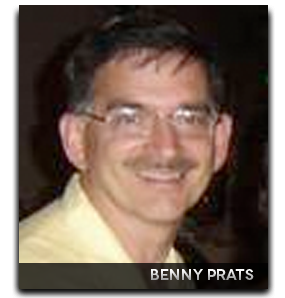 Location?
Location?
NASA GSFC Greenbelt Code 699/ eINFORMe
What is your role in the SAM project?
Electrical/Thermal Systems Engineer/Payload Downlink Lead
What about SAM do you find most interesting? Most challenging?
Most interesting aspects are conducting tests/experiments to assure hardware performance/health and to properly analyze gas evolved or ingested. The most challenging aspect of the project is overcoming obstacles that prevent the systems from performing to requirements.
Have you worked on other missions or flight instruments? If so which ones?
HST, IBEX, TIROS, AQUARIUS, JWST, GLORY, LOLA, EOS, LANDSAT
What kind/level of education do you have?
BS Aerospace Engineering, University of Maryland
What are your favorite things to do outside of work?
Spend time with family, dancing, barbeque and outdoors.
+ Justin Spring:
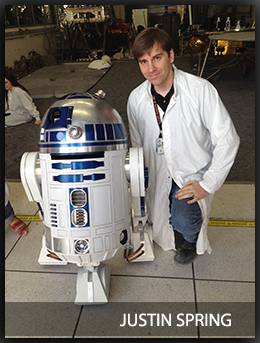 Location?
Location?
Honeybee Robotics, Pasadena, CA
What is your role in the SAM project?
Payload Uplink Lead (PUL)
What about SAM do you find most interesting? Most challenging?
It's fun to hear all of the cool stuff that is happening on Mars, and to be able to help out with getting experiments done on another planet.
Have you worked on other missions or flight instruments? If so which ones?
I also work with the Rock Abrasion Tool (RAT) on the Opportunity rover. She's old, but she's still kicking.
What kind/level of education do you have?
I have a Masters in Mechanical/Aerospace Engineering.
What are your favorite things to do outside of work?
I'm a super nerd and am really into playing Dungeons & Dragons with my co-workers. I also spend a lot of time with my various pets at home.
+ Florence Tan:
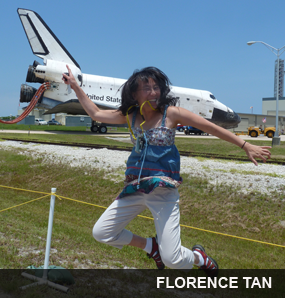 What is your role in the SAM project?
What is your role in the SAM project?
SAM Electrical Lead
What about SAM do you find most interesting?
Interesting: Getting all the players and pieces to play together. I love my job because
there is a new wrinkle to solve everyday. The job is fun because it is interesting
and challenging. The people who support SAM are great co-workers that have
many varied interests besides being superb engineers, scientists, and specialists.
Contrary to the public view of nerdy engineers and scientists, we have among us
accomplished chefs, divers, pilots, lawyer, master woodworkers, kayakers as can be
seen by each person's "favorite things" question. Working with the A-team makes
working on SAM and Curiousity is a lot of fun and never boring. I can't wait till we
land and start roving.
Most challenging?
SAM is a complex instrument suite with intricately put together subsystems that
are in their own right, just as complex. Building SAM within time and budget (mass,
cost, power, volume) constraints and getting everyone to work together is an
achievement in human collaboration.
Have you worked on other missions or flight instruments? If so which ones?
ISTP/WIND instruments APE, ELITE, IT, CASSINI INMS & GCMS, NOZOMI NMS,
CONTOUR NGIMS
What kind/level of education do you have?
BSEE, MSEE, MBA
What are your favorite things to do outside of work?
When I am not busy on SAM, I teach a early morning yoga class for my fellow SAM-
ites. I can't get Bob Arvey to join the class -- YET. I also volunteer teach Asian
Cooking (Thai, Malaysian, Chinese, Fusion) as a fund-raiser activity once a year and I
tutor pre-calc /calc classes for my neighborhood kids. I like to read any book by Bill
Bryson (I have almost all his books) and books about the English Language. I love to
go for walks and hikes with the SAM software lead and play many of our varied and
interesting board games with my family and friends.
+ Ryan Wilkinson:
 Location?
Location?
Greenbelt, MD NASA/GSFC
What is your role in the SAM project?
Facilitate Mars environment testing, design and construction of prototype hardware and ground support equipment.
What about SAM do you find most interesting? Most challenging?
The chance to work on hardware that will eventually travel on the surface of Mars is an absolute dream job. This project pushes the limits of what can be constructed, getting the most out of the hardware and staying within the weight/cleanliness/power constraints has been a challenge that this team has met.
Have you worked on other missions or flight instruments? If so which ones?
I've been involved with ground testing on many projects(HST, WMAP, MLA, JWST, Triana...) in my 11 years at Goddard, but this is the first flight project team I've been a member of.
What kind/level of education do you have?
Trades classes and some college courses.
What are your favorite things to do outside of work?
I love working on cars, remodeling my home, backpacking, roadtrips in my RV, entertaining and attending arts festivals.

